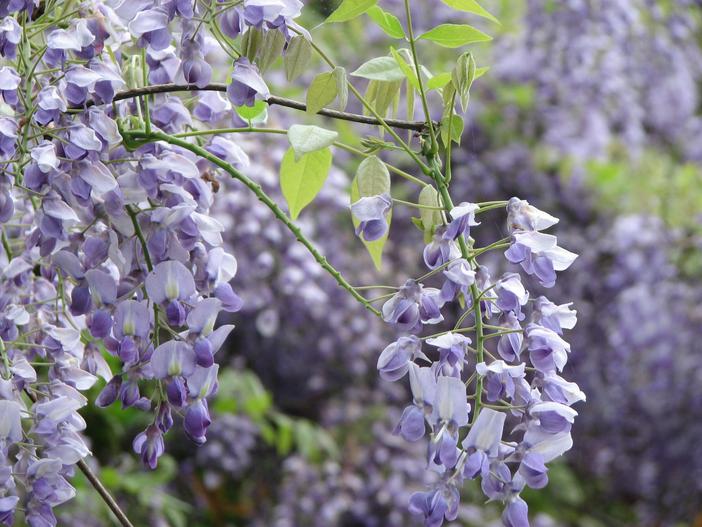Silky Wisteria
(Wisteria brachybotrys)
Silky Wisteria (Wisteria brachybotrys)
/
/

self
CC BY 3.0
Image By:
self
Recorded By:
Copyright:
CC BY 3.0
Copyright Notice:
Photo by: self | License Type: CC BY 3.0 | License URL: https://creativecommons.org/licenses/by/3.0 | Uploader: Anonymous Powered | Publisher: Wikipedia Commons













Estimated Native Range
Summary
Wisteria brachybotrys, commonly known as Silky Wisteria, is a deciduous perennial vine native to the moist, well-drained soils of mountainous regions and valley woodlands in Eastern Asia, particularly Japan. It can grow to 19 m (62 ft) or more, and is an anticlockwise twining woody climber. The leaves are pinnately compound, up to 35 cm (14 in) long, with a velvety texture and comprise up to 13 leaflets. The flowers, which appear in late spring to early summer, are highly fragrant and come in shades of pale violet or white, each with a distinctive yellow blotch at the base. The flowers are showy and hang in pendulous racemes, making them a striking feature in the landscape.
Silky Wisteria is valued for its attractive, sweet-smelling flowers and its ability to create a lush, draping canopy. It is often used to add vertical interest in gardens, trained on structures such as trellises, arbors, walls, or pergolas. It can also be trained as a half-standard tree for a more formal appearance. While it prefers full sun to partial shade, it is adaptable to a range of soil conditions, provided they are well-drained. Regular pruning is necessary to control its growth and enhance flowering. Caution is advised as all parts of the plant contain toxic compounds that can be harmful if ingested in large quantities. In some regions, it is considered potentially invasive, so it is important to check local guidelines before planting.CC BY-SA 4.0
Silky Wisteria is valued for its attractive, sweet-smelling flowers and its ability to create a lush, draping canopy. It is often used to add vertical interest in gardens, trained on structures such as trellises, arbors, walls, or pergolas. It can also be trained as a half-standard tree for a more formal appearance. While it prefers full sun to partial shade, it is adaptable to a range of soil conditions, provided they are well-drained. Regular pruning is necessary to control its growth and enhance flowering. Caution is advised as all parts of the plant contain toxic compounds that can be harmful if ingested in large quantities. In some regions, it is considered potentially invasive, so it is important to check local guidelines before planting.CC BY-SA 4.0
Plant Description
- Plant Type: Vine
- Height: 10-25 feet
- Width: 3-6 feet
- Growth Rate: Moderate
- Flower Color: Pink, Purple, White
- Flowering Season: Spring
- Leaf Retention: Deciduous
Growth Requirements
- Sun: Full Sun, Part Shade
- Water: Medium
- Drainage: Medium
Common Uses
Bee Garden, Bird Garden, Butterfly Garden, Deer Resistant, Fragrant, Hummingbird Garden, Salt Tolerant, Showy Flowers
Natural Habitat
Moist, well-drained soils of mountainous regions and valley woodlands in Eastern Asia
Other Names
Common Names: Yama-Fuji
Scientific Names: , Wisteria brachybotrys, Wisteria venusta, Wisteria brachybotrys f. alba, Wisteria venusta f. violacea, Rehsonia brachybotrys, Rehsonia venusta, Wisteria venusta f. plena, Kraunhia brachybotrys, Kraunhia floribunda var. brachybotrys
GBIF Accepted Name: Wisteria brachybotrys Siebold & Zucc.